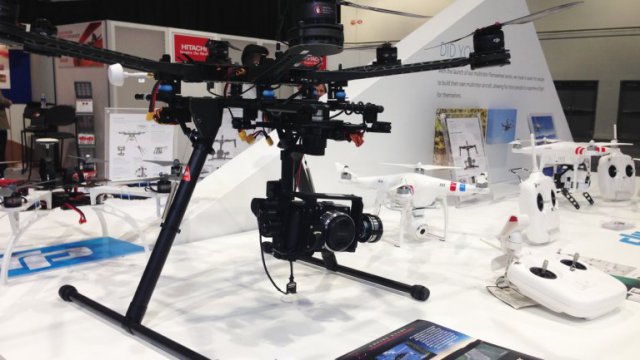 Members of the Hollywood community are applauding the Federal Aviation Administration’s final regulations for the commercial use of small drones, which includes those used in Hollywood production.
Members of the Hollywood community are applauding the Federal Aviation Administration’s final regulations for the commercial use of small drones, which includes those used in Hollywood production.
The FAA on Tuesday issued new rules for the operation of unmanned aircraft systems, also known as UAS, used by both business and government. The rules, which will take effect in August, govern the use of drones weighing less than 55 pounds that are conducting non-hobbyist operations.
“The FAA final rules will further enable the film and television industry to incorporate this innovative technology into great storytelling, while expanding opportunities for American workers and small businesses in the creative economy. It is also very gratifying for our industry that filmmakers were able to pave a path for the broader commercial use of unmanned aerial systems,” Chris Dodd, chairman and CEO of the MPAA, said in response to the new regulations.
The MPAA had earlier submitted comments during the Notice of Proposed Rulemaking Process, and played a key role two years ago when the FAA began to grant aerial production companies exemptions from the exiting rules that limited drone use, allowing for approvals for drones to be used for filming on domestic movie and TV productions.
In effect, under the waiver system, Hollywood production companies had already been operating under what now has been condified as the new rules. Under the earlier FAA approvals, the TV series The Mentalist, in December 2014, became the first domestic productions to use drones for filming. They have since been used in such other projects as Marvel’s Avengers: Age of Ultron and HBO’s The Leftovers.
Tony Carmean, partner at Aerial MOB, one of a number of aerial production companies that already has been using drones for production under the FAA exemptions, hailed the final rules and said they will lessen “the requirements and burdens for leading companies in the film production industry like Aerial MOB to operate safely to achieve unique perspectives that directors and cinematographers are requesting from drones.”
He added: “Although it also opens up the opportunity for more people to operate drones in film production with minimum requirements, it is important for productions to be sure to look at [several factors] when vetting out an aerial drone cinematography company [including] the safety track record of the company and [confirmation] that the company has the proper liability and other insurance coverage in place.”
Speaking of the broad opportunities that the new regulations will create, Douglas Johnson, vp of technology policy at the Consumer Technology Association, said, “We’re pleased to see the FAA strike an appropriate balance of innovation and safety in its authorization for commercial drones and recognition of the value this rapidly-evolving technology offers. This is a critical milestone toward the safe integration of drones into the national airspace system — and a far better approach than the current exemption-based system — but clearly additional steps are needed such as addressing ‘beyond-line-of-sight’ operations, which will be a true game changer.”
Noting that further review of local and state regulations is needed, Johnson added: ‘From the fast delivery of emergency supplies to more efficient crop production and improved safety for our bridge and building maintenance crews, drones have the power to save lives and help millions of people across the country. But the growing tangle of misaligned, conflicting rules at the state and local levels threatens to choke this nascent technology. To fully realize drones’ remarkable economic potential — creating jobs, maximizing efficiencies, lowering consumer costs and fueling the U.S. tech economy — state lawmakers and local officials must defer to federal rules.”
The new FAA rules set forth several requirements: A person flying a drone for commercial use must be at least 16 years old and have a remote pilot certificate with a small UAS-rating, or be supervised by someone with such a rating; the operator must perform a preflight visual and operational safety check; the operator must keep the drone within a visual line of sight; operations are allowed during daylight and twilight hours if the drone has anti-collision lights; and flights over unprotected people on the ground who aren’t directly participating in the UAS operation are prohibited. The FAA also is establishing a process to waive some restrictions and will create a portal at which operators can apply for waivers.
Photo: Carolyn Giardina
Source: Hollywood Reporter
